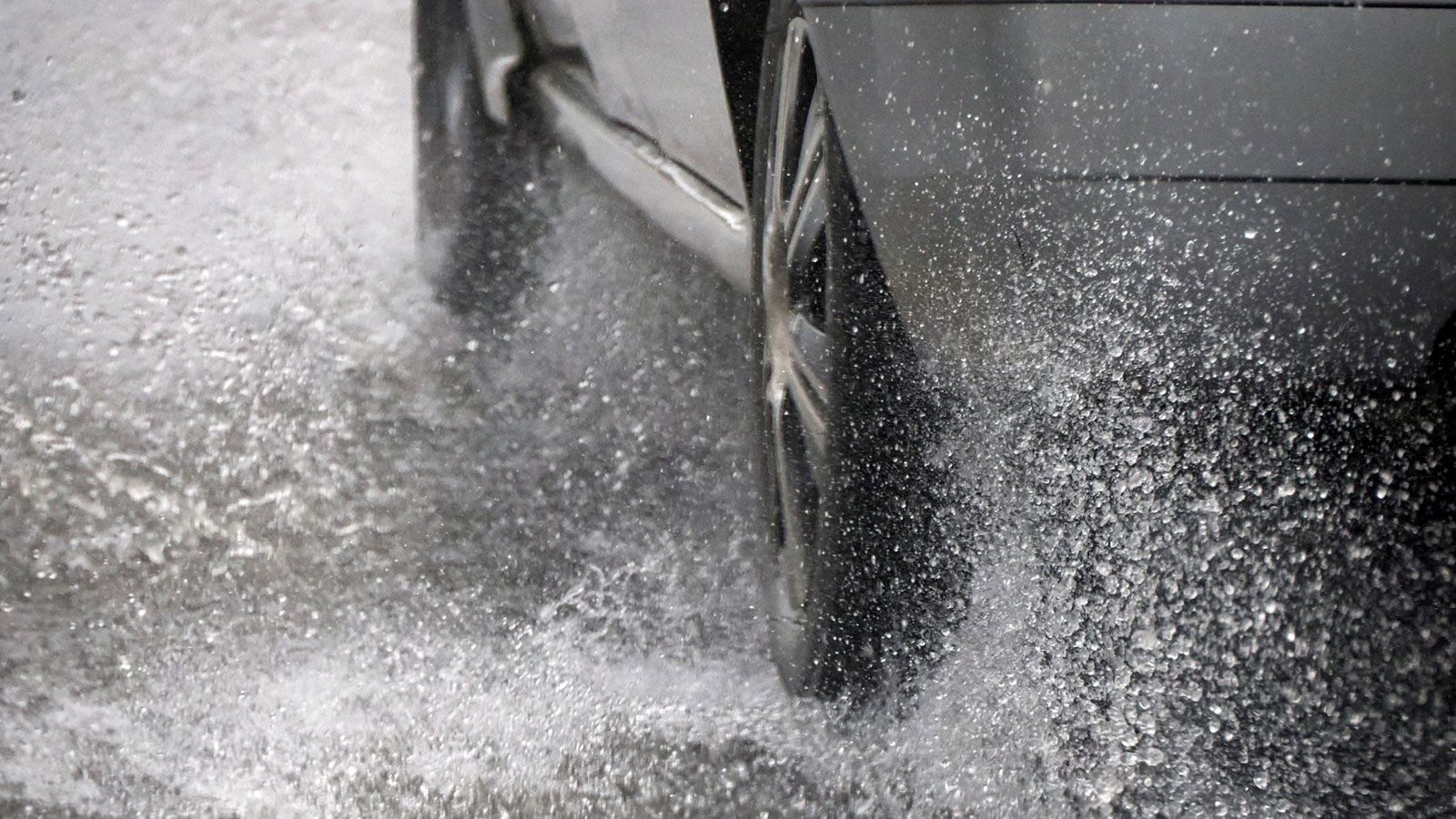How does aquaplaning occur?
Aquaplaning happens when a layer of water forms between the tyres of a vehicle and the road sur-face during wet conditions. This occurs when the tyres can no longer clear the water quickly enough — either because there’s too much water, the tread pattern is worn out, or the vehicle is travelling too fast. As a result, contact between the tyres and the road is lost, and the vehicle starts to slide, making it impossible for the driver to steer or brake properly.
Typical warning signs
During heavy rain, the risk of aquaplaning increases significantly. To prevent their vehicle from los-ing contact with the road, drivers should be especially alert to warning signals. “Widespread spray or water jets from the tyres of the vehicle ahead indicate a lot of water on the road. Also, an unusual loud rushing noise from the wheel arches or underneath the car suggests the tyres are reaching their limits,” says Schnitzler. Another common warning sign is if the steering suddenly feels lighter than usual or the engine revs suddenly increase, even though the vehicle isn’t accelerating.
How to react correctly
If aquaplaning occurs, it’s crucial to stay calm and react sensibly. “Drivers should gently, lift off the accelerator to avoid further acceleration,” advises Schnitzler. For cars with manual gearboxes, press the clutch to disconnect the engine from the drive. For automatics, shift to ‘N’ (neutral). “Avoid sudden steering movements or abrupt braking — these significantly increase the risk of los-ing control,” the expert adds. Instead, keep the steering wheel steady and allow the vehicle to roll out as smoothly as possible until the tyres regain contact with the road. Once contact is re-established, gentle steering or braking can be resumed safely.
Smart prevention
Prevention is the best way to avoid aquaplaning. Drivers should regularly check the condition of their tyres. “Adequate tread depth and correct tyre pressure are essential for clearing water effec-tively,” Schnitzler explains. Worn or under-inflated tyres greatly increase the risk. Additionally, dur-ing rain or on visibly wet roads, slow down significantly and keep a safe distance from the vehicle ahead. Lower the volume of music, podcasts, or radio to avoid missing important vehicle or water noises. Be especially cautious around deep water patches and ruts. Driving more slowly and main-taining plenty of space ahead can give you valuable reaction time in an emergency.
In summary: How to avoid aquaplaning
- Drive with good-quality tyres
- Slow down considerably in heavy rain
- Keep a safe distance
- Turn down music or podcasts and listen for road and water noises
- If the vehicle starts to slide: press the clutch or shift to ‘N’, avoid steering or braking sudden-ly, and let the car roll out naturally



